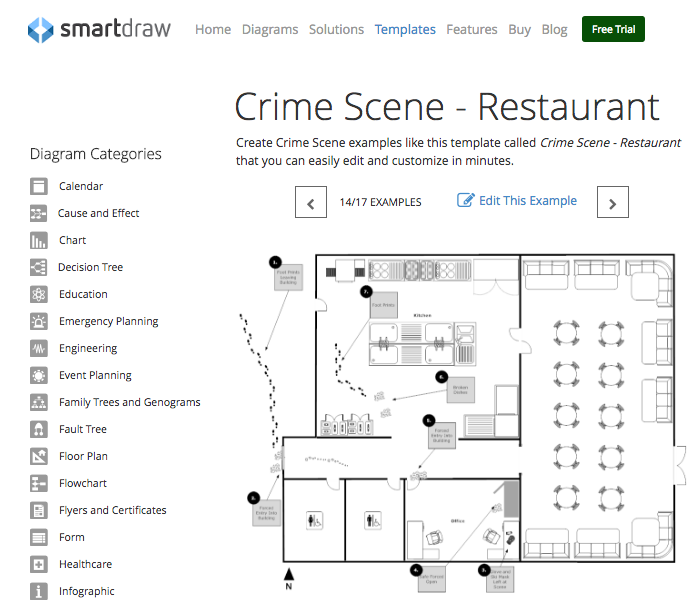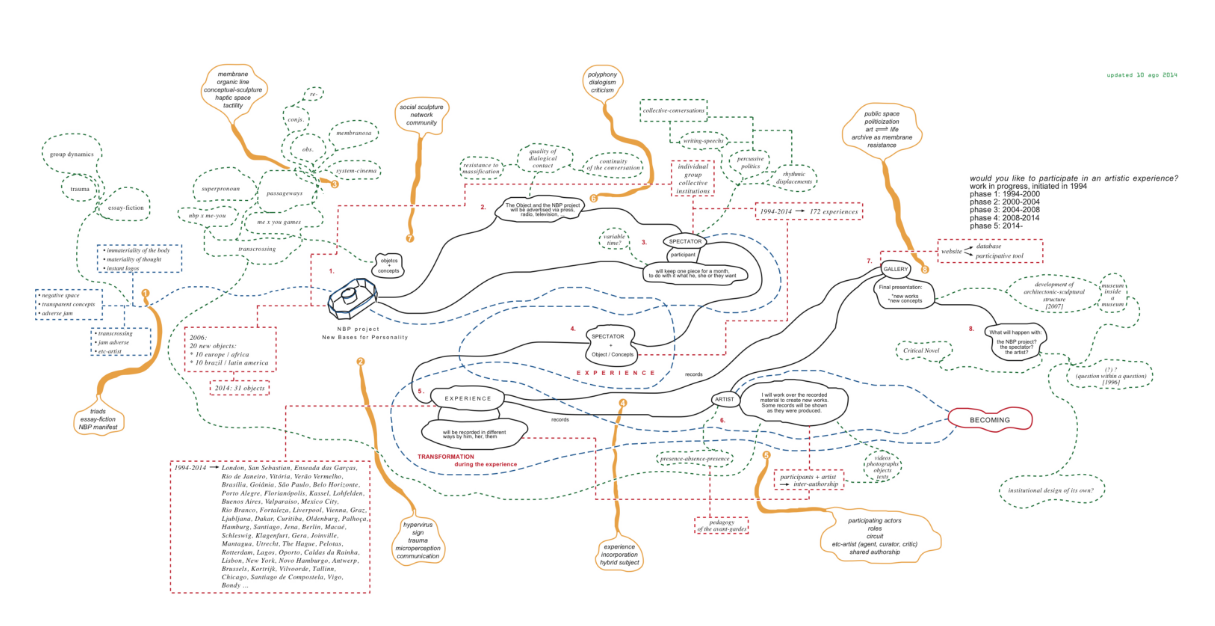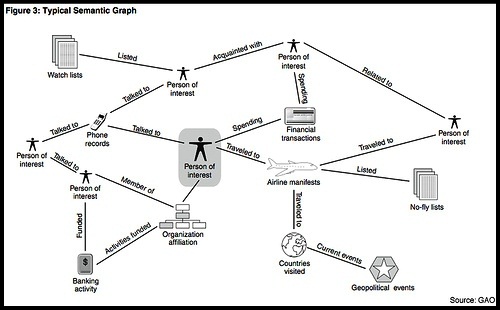Schematic
Examples
http://www.nbp.pro.br/doc/d_08__1254.pdf
 https://www.smartdraw.com/crime-scene/examples/crime-scene-restaurant/
https://www.smartdraw.com/crime-scene/examples/crime-scene-restaurant/
- https://en.wikipedia.org/wiki/Traffic_collision_reconstruction
- https://en.wikipedia.org/wiki/Link_analysis
Mark Lombardi was considered an American Neo-Conceptualist and an abstract artist. His major legacy was linked to his large-scale linear diagrams attempting to trace the structures of financial and political power, corruption and affairs among capitalists, politicians, corporations, and governments (or, said à la Marx: that “Band of hostile brothers“).
A strong influence by Mark Lombardi’s work can be seen in Futurefarmers Josh On’s 2004 “They Rule“, that also drew a lot from “The Power Elite“, a book written in 1956 by the sociologist C.Wright Mills. http://www.theyrule.net/
“In 1994 I began a series of drawings I refer to as “narrative structures.” Most were executed in graphite or pen and ink on paper. Some are quite large, measuring up to 5 x 12 feet. I call them “narrative structures” because each consists of a network of lines and notations which are meant to convey a story, typically about a recent event of interest to me, like the collapse of a large international bank, trading company, or investment house. One of my goals is to explore the interaction of political, social and economic forces in contemporary affairs. Thus far I have exhibited drawings on BCCI, Lincoln Savings, World Finance of Miami, the Vatican Bank, Silverado Savings, Castle Bank and Trust of the Bahamas, Nugan Hand Limited of Sydney, Australia, and many more. Working from syndicated news items and other published accounts, I begin each drawing by compiling large amounts of information about a specific bank, financial group or set of individuals. After a careful review of the literature I then condense the essential points into an assortment of notations and other brief statements of fact, out of which an image begins to emerge. My purpose throughout is to interpret the material by juxtaposing and assembling the notations into a unified, coherent whole. In some cases I use a set of stacked, parallel lines to establish a time frame. Hierarchical relationships, the flow of money and other key details are then indicated by a system of radiating arrows, broken lines and so forth. Some of the drawings consist of two different layers of information—one denoted in black, the other, red. Black represents the essential elements of the story while the major lawsuits, criminal indictments or other legal actions taken against the parties are shown in red. Every statement of fact and connection depicted in the work is true and based on information culled entirely from the public record. – Mark Lombardi (Artist Statement)”
Lombardi died, a suicide, at 48 in March 2000. (Conspiracy theories notwithstanding, those closest to him cite a series of personal reversals.) Since then, his work has attracted a growing body of admirers. One of them is Robert Hobbs, a professor of art history at Virginia Commonwealth University and the curator of this exhibition, which was organized under the auspices of Independent Curators Inc.
Mr. Hobbs first encountered Lombardi's work through a review in Art in America magazine in June 1999. Immediately, he was impressed by its sheer beauty, by the delicacy of the curving lines, delineating abstract force fields created by the global movement of money. He describes the works variously as webs, rhizomes and constellations. "It was a mental and visual seduction," he said.
Mr. Hobbs was also intrigued that the drawings showed only a sliver of a larger, inaccessible reality. "The drawings exist," he said, "between what is known — the people, the organizations, the court judgments — and the unknown, which is what is between them. In that sense, they are about the difference between the ideal and the real."
Mr. Hobbs never got a chance to meet the artist. But after hearing of Lombardi's death, he resolved to do something to bring the work to a larger audience. This turned out to be a job of monumental proportions. Along with a studio full of complex, meticulously delineated drawings, Lombardi left behind a file of 14,500 index cards with information on the subjects of his investigations, all drawn from publicly available sources. His tiny studio also contained hundreds of books on art, politics, banking, history and espionage that had served as source material for his charts.
In order to prepare the catalog for this show, Mr. Hobbs had to tease out as best he could the factual underpinnings of each work. "In the end," he said, "I had to produce my own reading of them. I'm just suggesting one set of narratives, but there are probably many others."
What kind of artist devotes his life to ferreting out global conspiracies? Joe Amrhein, director of the Pierogi Gallery in Williamsburg, Brooklyn, has represented Lombardi's work since 1998. He is quick to distance Lombardi from the Hollywood stereotype of the crazy conspiracy theorist. "He was not a paranoid," he said. "He was not a negative person." Nor, Mr. Amrhein said, did Lombardi have a political ax to grind. He noted wryly that "you probably need to have less understanding about the connections to be political."
Instead, Mr. Amrhein said, "he was just completely fascinated by connections, how one thing led to another, how the C.I.A. would back a coup in Australia, someone would be murdered in Turkey and things would happen in Indonesia."
LOMBARDI, who had a background in art history and worked at various times as a reference librarian, a curator and a researcher, initially conceived of his drawings as an adjunct to his unpublished writings on complex events like the Reagan drug war and the savings and loan crises. Eventually, he realized that the drawings were the real end product of his research. At the time of his death, he was beginning to gain some attention in the art world, receiving favorable notice for his solo shows and invitations to appear in important group shows.



